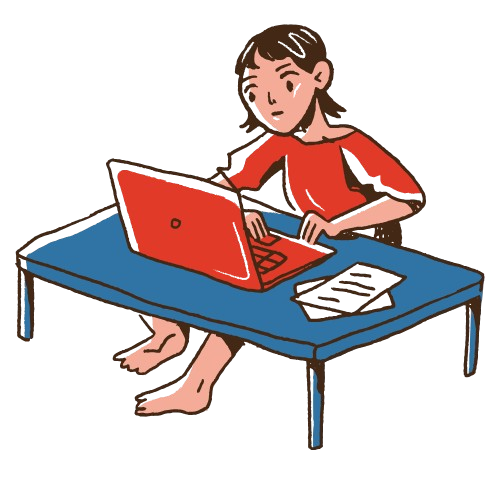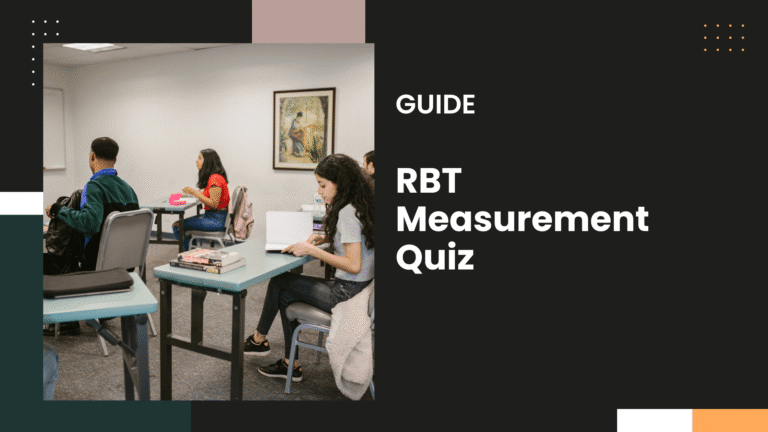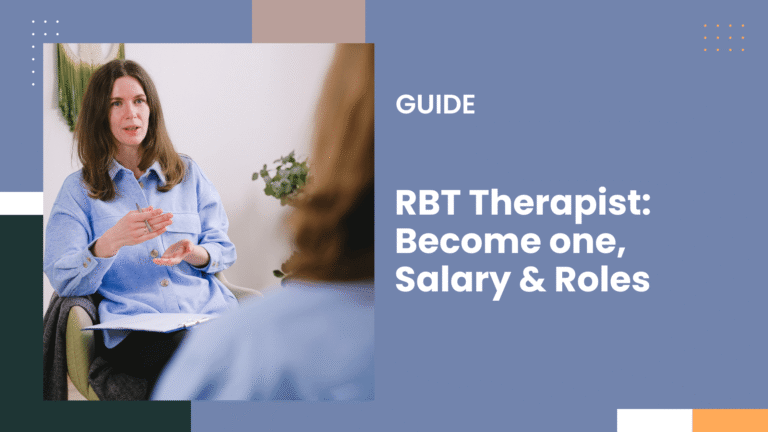RBT for Autism | Certification, Career Guide & Daily Life

An RBT for autism provides one-on-one Applied Behavior Analysis (ABA) therapy, following a BCBA’s plan to improve communication, behavior, and life skills. They work directly with individuals on the spectrum, tracking progress and supporting personalized goals in home, school, or clinic settings.
If you’ve ever wanted a hands-on role where you directly help children and adults with autism develop life-changing skills, becoming a Registered Behavior Technician (RBT) might be the right path for you.
This job is in high demand, which means it offers meaningful work and doesn’t require a college degree, but it does require dedication, the right training, and a heart for autism support.
What Is an RBT?
Basically, an RBT is a paraprofessional who works under the supervision of a Board Certified Behavior Analyst (BCBA) to apply Applied Behavior Analysis (ABA) strategies.
If we come to the topic and focus on autism, which means your job is to help clients build communication, social, and daily living skills while reducing challenging behaviors.
Is RBT only for Autism?
No, RBT is not only for Autism. The role isn’t limited to autism, even if many RBTs (Registered Behavior Technicians) work with children and adults on the autism spectrum.
RBTs can support individuals with developmental delays, behavioral challenges, learning disabilities, and other conditions.
That said, autism therapy is one of the most common areas where RBTs are in demand, especially in ABA (Applied Behavior Analysis) clinics and schools.
What is RBT therapy for autism?
RBT therapy for autism means using ABA techniques to help individuals build skills, improve communication, and reduce behaviors that interfere with daily life.
As an RBT, I might work one-on-one with a child to help them learn how to request their needs, manage transitions, or engage in social activities, always following a plan designed by a Board Certified Behavior Analyst (BCBA).
Why RBTs Are Essential in Autism Support
Autism interventions often require structured, consistent, one-on-one support.
That is why BCBAs create the treatment plans, but it’s the RBTs (who is gonna be you in this case) who spend the most time with clients, such as running therapy sessions, tracking progress, and making real-time adjustments based on the BCBA’s guidance.
Without skilled RBTs, many of the ABA programs wouldn’t function.
You’re the person turning clinical recommendations into real-life progress.
How Do I Get RBT Certification?
To become an RBT for autism, you must first need to meet the Behavior Analyst Certification Board (BACB) requirements:
1. Meet the eligibility requirements
- Be at least 18 years old.
- Have a high school diploma or equivalent.
- Pass a background check.
2. Complete RBT training
Take a 40-hour RBT training course that meets BACB standards (can be online or in-person). The training will cover various ABA principles, ethics, data collection, and autism-specific applications.
3. Pass the competency assessment:
A BCBA or qualified assessor observes you performing RBT tasks.
4. Apply to the BACB
After you have passed the 40-hour course and passed the test, submit your application online with documentation and fees.
5. Pass the RBT exam
The exam is a multiple-choice MCQ test covering ABA concepts and professional conduct. By the way, if you want a mini study guide on RBT or want to have a mock test, click here.
Once you pass, you’re officially an RBT and can begin working under BCBA supervision.
What Is an RBT Job?
Now we can come to the real work, where you, as an RBT in autism support, will work directly with clients who are often children, and implement ABA therapy.
You’ll help them:
- Improve communication skills (spoken, sign language, or device-based).
- Build social interaction abilities.
- Learn self-care and daily living tasks.
- Reduce challenging behaviors that interfere with learning or safety.
I was also curious about this initially, but if you are wondering where you will be seeing clients and working, it happens in homes, schools, or clinics, depending on the therapy program.
What Does an RBT Do Each Day? (Daily Routine in Autism Care)
Truthfully, I can’t say for sure, as it differs from place and client to client. Your daily schedule will depend on your setting and caseload, but here’s what a typical day in autism-focused ABA might look like:
Morning:
- Review client goals and data from the previous session.
- Set up therapy materials and reinforcers (toys, games, visual aids).
- Begin one-on-one ABA sessions focusing on specific skills (language, motor skills, social play).
Midday:
- Transition to community or school settings if required.
- Support social skills practice with peers.
- Collect and log data after each activity.
Afternoon:
- Continue therapy sessions — possibly with a different client.
- Work on daily living skills like brushing teeth, preparing snacks, or cleaning up.
- Communicate with parents or caregivers about the day’s progress.
End of Day:
- Submit session notes to the BCBA.
- Prepare for the next day’s sessions.
Salary Expectations for RBTs in Autism Support
Most RBTs earn $18–$28 per hour, depending on location and experience.
Full-time positions often come with benefits, while part-time roles may offer flexible schedules.
Demand for autism-focused RBTs is especially high in school districts, therapy clinics, and home-based programs.
Why This Career Is Worth It?
If you want to make a measurable difference in the lives of individuals with autism, RBT work is one of the most direct paths to doing so.
You’ll see clients reach milestones, learn new skills, and gain independence, and you’ll know you played a role in making it happen.
My Experiences as an RBT Working With Autism
When I first stepped into the world of ABA therapy as an RBT, I had a mix of excitement and uncertainty.
I knew I wanted to work with individuals on the autism spectrum, but I didn’t fully understand what the day-to-day reality would look like until I was in it.
One of the first things I learned was that no two days are the same.
Some days were filled with laughter, watching a child make a breakthrough on a skill we’d been working on for weeks.
Other days were challenging, dealing with meltdowns, resistance, or moments when I questioned whether I was making an impact.
Over time, I realized that every small step counts. Even on the tough days, progress is happening in ways you don’t always see right away.
Working with autism taught me patience in a way no textbook could.
I quickly saw that ABA isn’t just about following a program sheet; it’s about connection. Some of my most productive sessions happened when I put the data sheets aside for a few minutes and just engaged in play.
I remember one particular client who rarely made eye contact or spoke more than a few words. For months, I worked on pairing myself with fun and positive reinforcement, being the person who brought games, songs, and snacks they loved.
One afternoon, completely unprompted, they called me by name for the first time. That moment still gives me goosebumps. It wasn’t just a “goal mastered” note in the data—it was a sign of genuine connection.
The physical demands were something I wasn’t fully prepared for in the beginning. I’ve had sessions that involved constant movement, bending, lifting, or redirecting. On the flip side, I’ve also had long stretches of quiet table work.
The variety keeps you on your toes, but it also means you need to take care of yourself—good shoes, staying hydrated, and knowing your own limits make a difference.
One of the most rewarding aspects for me has been watching skills generalize into real life. It’s one thing to teach a child how to request a snack in a controlled therapy setting. It’s another to see them do it at home with their parents without prompting. Those moments are when you know the work is paying off.
I also learned the importance of teamwork. Being an RBT means working closely with a BCBA, parents, and sometimes teachers.
I’ve sat in countless meetings where we’ve reworked programs, brainstormed strategies, and celebrated wins together. When everyone’s on the same page, the progress feels faster and more sustainable.
Looking back, my experience as an RBT working with autism has been both humbling and empowering. It’s a job that pushes you, teaches you, and changes you.
You walk away with a deeper understanding of people, patience, and the importance of small victories. If you’re considering this path, know that it’s not always easy, but it’s worth every single step.






